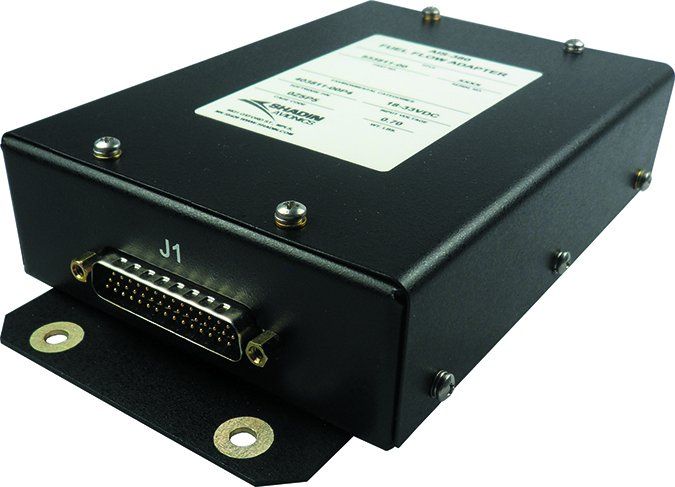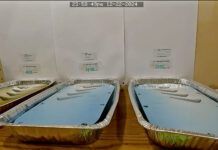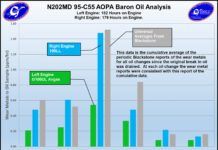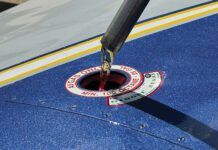Among the many avionics gadgets to install, an aftermarket fuel totalizer could offer the most utility. These devices are simple to operate, they work with most modern GPS navigators for trip endurance calculations, and while installation technique is critical, they aren’t overly complex to retrofit.
There are four major players in the standalone fuel computer market: Shadin Avionics, Insight Avionics, JP Instruments and Electronics International. In this article we’ll look at each product line and show how they can interface with a GPS navigator.
Fuel Flow Metering 101
A misconception is that fuel totalizers measure fuel quantity. While that may ultimately be the end result (you first have to enter the amount of fuel that is in the tanks), a fuel totalizer meters the amount of fuel that flows to the engine. Think in terms of fuel endurance (based on flow) rather than fuel quantity. Fuel metering is done with a fuel flow transducer installed in line and prior to the fuel distributor or carburetor. The fuel passes through a small axial turbine wheel and past an optical sensor located inside the transducer body, which spins faster at higher fuel flows and slower at lower ones. A higher capacity transducer may be required for larger engines, including turbines and radials.
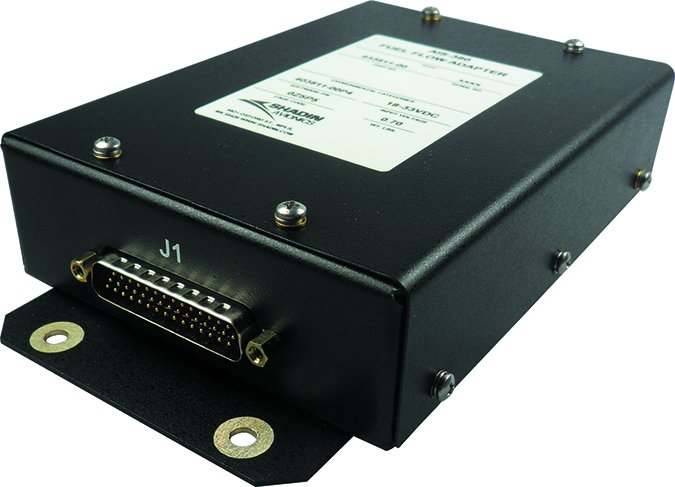
A fuel flow transducer is an electromechanical device, since it converts the energy of the spinning turbine wheel to electronic signal pulses, which are passed along to a microprocessor and then displayed on a control head or on a GPS navigator (generally on a fuel endurance utility page).
The transducer is a critical component in the fuel system, and the installation requires splicing into the engine fuel supply line. For this reason, we caution against installations done on the cheap. We’ve seen far too many compromised installations, including ones with shoddy signal wiring, improper clamping, missing fire sleeving (this is a protective sheathing installed around critical components in the fuel delivery lines), and even leaking fuel line fittings. This is the stuff that engine fires are made of.
The good news is that fuel transducers are designed to be failsafe, and a failed metering turbine will not interrupt fuel flow to the engine. Last, to get the correct measurements, the system has to be properly programmed. This includes setting the device’s K factor—a numerical value representing the number of electronic pulses generated per gallon of metered fuel flow. The science to accurate fuel computer installations includes fine-tuning the K factor and accurately entering the total usable fuel during the initial programming. When soliciting quotes for installation, ask the shop how many systems it has installed and on which engines. Since the job will require both engine and avionics work, you want a shop possessing both skills.
If you already have a fuel computer and are upgrading the GPS, listen up. Rapidly changing navigator software could have a sizable effect on its compatibility. We’ve heard from some owners whose shops had to backload software to regain full capability. Installations can be a real test of cross-brand compatibility and you’ll need to rely on the shop to know what is compatible.
Shadin Flo Series
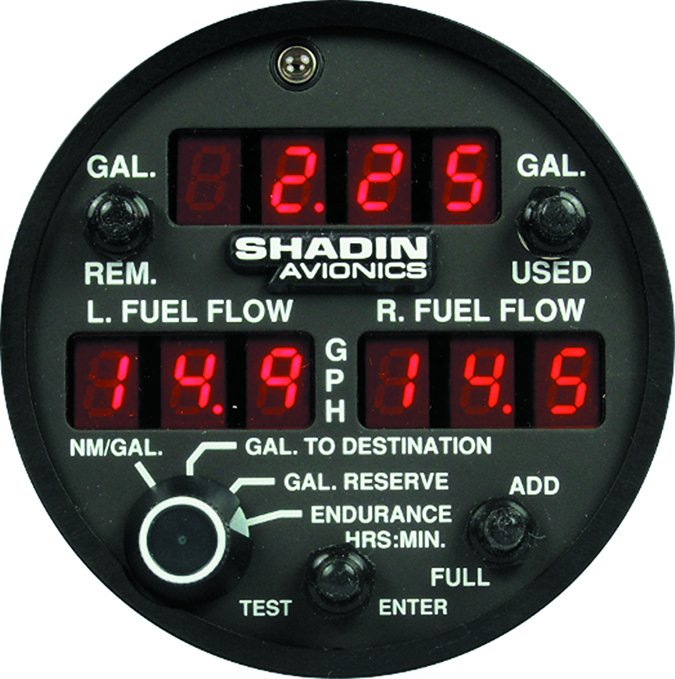
When it comes to form factor, Shadin’s Flo-series computers are the most versatile on the market. The line comes in a variety of shapes and sizes and all of the systems have a GPS interface, via two-way RS-232 serial data. This is what the L suffix is after the models, left over from the Loran-C days.
On a side note, if you’re searching the used market for a used Shadin fuel computer, earlier models only support a one-way data stream (they can’t receive GPS data), while some didn’t have the capability at all. You’ll also need the right transducer, which depends on the design of the fuel system. Most shops will require that you purchase a new installation kit, perhaps even a new transducer. A new Shadin/Floscan transducer kit sells for nearly $900.
The current Shadin product line includes the Microflo-L, which fits in a 2-inch instrument hole, the rectangular Miniflo-L and the Digiflo-L, a full 3-inch instrument available for both single- and twin-engine applications. Regardless of the model, we’ve always been impressed with the Flo series’ rugged bezel controls and bright LED displays. The computers can be configured to display fuel in gallons per hour (measured to a tenth of gallon, up to 100 gallons) or in pounds.
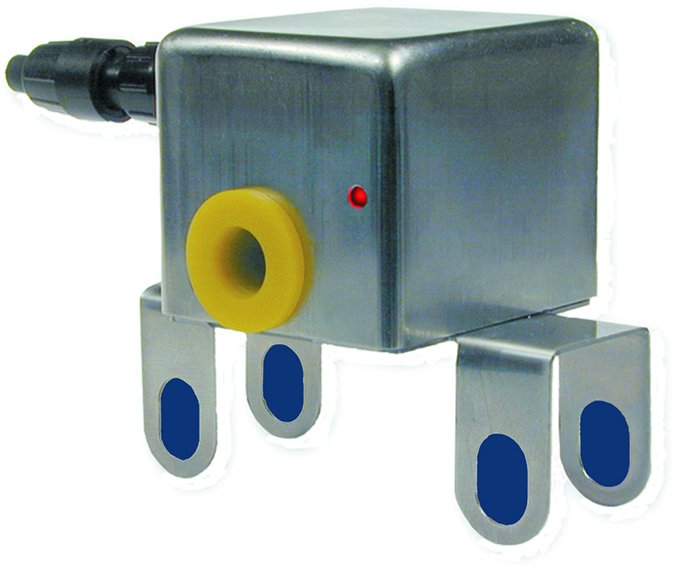
All of the Flo-series control heads offer the same basic functions. In single-engine applications, the current fuel flow is always displayed in one window (the Digiflo-L for twins has a dedicated flow window for each engine), while fuel remaining is shown in another window. You can also view the amount of fuel used and fuel remaining by pressing the REM/USED toggle switch. A rotary switch enables the display of fuel endurance (in hours and minutes), nautical miles per gallon, gallons to destination and gallons to reserve. Many of these functions rely on a connected GPS navigator source for groundspeed.
As mentioned in the above sidebar, a new product is the Shadin AIS-380 RemoteFlo. Communicating via Arinc 429 or RS-232 to a wide variety of GPS navigators and remote displays (including Garmin, Avidyne and BendixKing), the RemoteFlo measures 6.90 by 4.24 by 1.57 inches and weighs less than one pound.
It can be mounted in any orientation in the aircraft, although it has to be located within a controlled temperature area and inside the pressure vessel in pressurized aircraft. The device also has an air data computer input, in addition to magnetic heading input for outputting to compatible devices. Shadin’s Flo-series computers start at $1100 for singles.
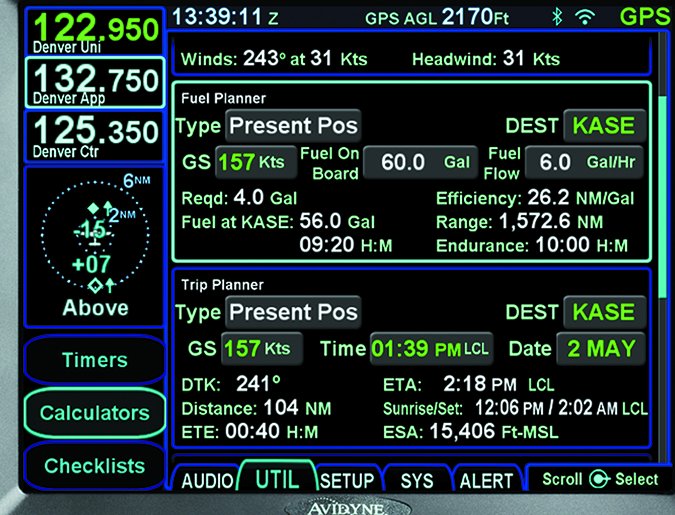
JP Instruments
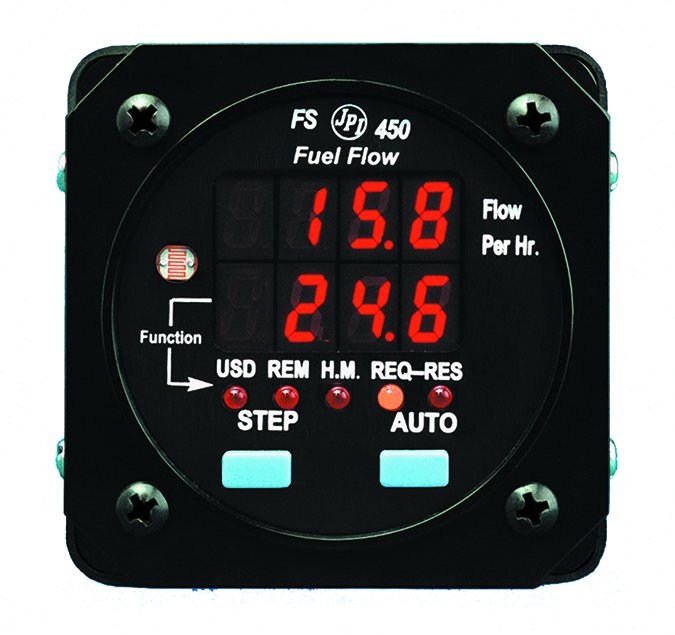
Previously acknowledged with an Aviation Consumer editor’s choice award, the JP Instruments Fuel Scan 450 (FS-450) mounts in a 2-inch instrument cutout and has a seven-segment LED display. What we like best about that photocell-controlled display is it always shows the current fuel flow on the top line, while it scrolls through other parameters on the lower portion, including total fuel used and the amount of fuel that’s remaining. It’s configurable to measure in gallons, pounds or liters.
By default, the FS-450 automatically loop-indexes through five parameters, including the amount of fuel used since the last refueling, the amount of fuel remaining, endurance (the hours and minutes of remaining available fuel), the fuel required to the next active GPS waypoint and the reserve fuel that will be remaining when you reach the next active waypoint. The Step button allows you to manually freeze the display on any of these parameters, while individual annunciator lamps indicate which one is being displayed. Pressing the Auto button puts the unit back into scan mode.
We think the FS-450 has an easy yet interactive user interface. For instance, if there is a low fuel or an endurance alarm, the automatic scanning will stop and the appropriate mode’s indicator lamp flashes to acknowledge the alarm. Press the Step button to acknowledge, and the scan resumes.
The FS-450 is compatible with a wide variety of newer and vintage GPS navigators through its serial databus. It can also be connected to compatible portable GPS systems.
The FS-450 comes in several versions, including one for Rotax engines. The FS-450P for fuel pump-equipped engines (and the FS-450G for gravity flow fuel systems) is $699. Interfaces with pressure carburetors require two transducers, increasing the system price to $1095. There is also a version with a high-flow transducer for $1380. If you already have a transducer on the engine, you can purchase the FS-450 indicator and an interface harness for $400.
Electronics International
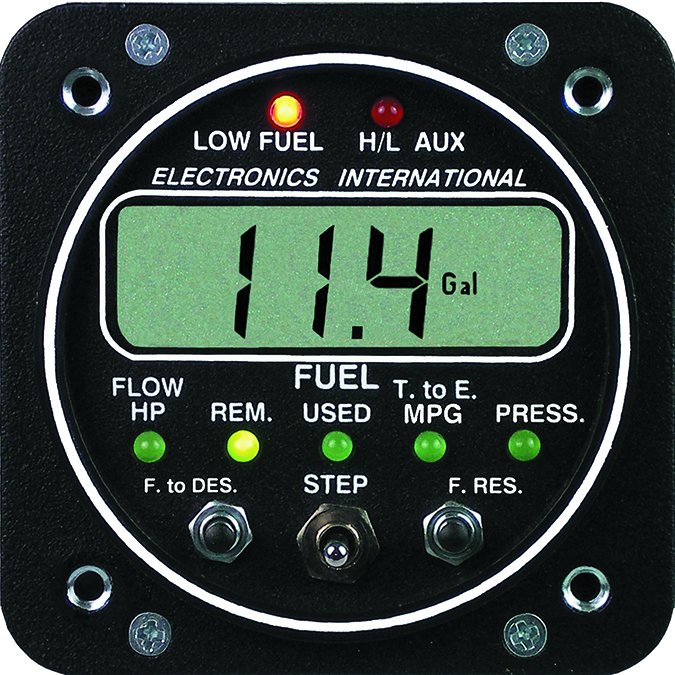
In addition to computing fuel flow and endurance data, the company’s 2-inch LCD display-equipped FP-5L (and FP-5 without GPS interface) fuel totalizer is approved for use as a primary fuel pressure indicator, since it’s equipped with an additional data input channel.
That same channel can alternatively be used for displaying either EGT (which provides compensation for a displayed horsepower value during engine leaning), CHT, oil temperature, carb temperature, OAT, oil pressure, manifold pressure, instrument vacuum, bus voltage or amps. The instrument requires an optional Functional Module, which is a 3- by 2- by 1-inch remote processor. It comes with the proper sensors and cables. You could connect multiple sources to the one channel and toggle through them with a remote control switch, but we think a full-up engine monitor is the better choice for the required effort.
As for fuel monitoring, Electronics International manufacturers its own fuel flow transducer, a device that EI says tames the displayed fluctuations in flow during changes in mixture settings. We like the automatic calibration mode, which fine-tunes the K factor if you find inaccurate calculations of fuel remaining or fuel used since you filled the tanks.
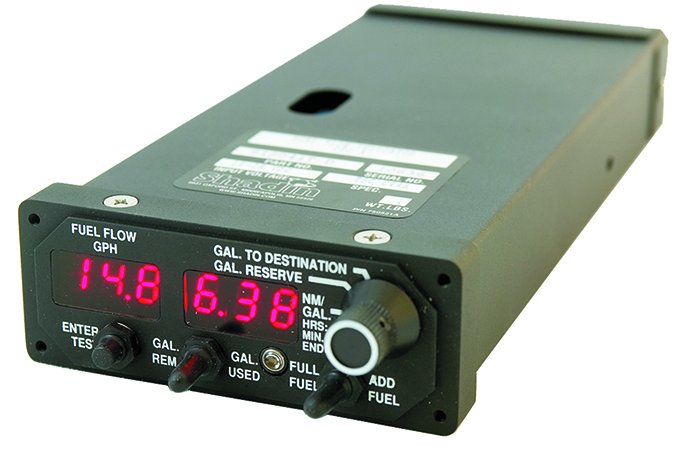
It’s worth noting that transducers used by Shadin and JPI are manufactured by Floscan. These have proven reliability, with metering accuracy, according to Floscan, within one-tenth of a gallon at a given fuel flow.
The FP-5 and FP-5L each have seven display modes: fuel flow, horsepower, fuel remaining, fuel used since full, fuel used for the flight, time-to-empty, plus the aux channel. The GPS-compatible FP-5L has all the features of the FP-5, with four additional display modes: nautical miles per gallon, statute miles per gallon, fuel to the destination and fuel reserve. The bezel controls are straightforward, with dedicated fuel-to-destination and fuel reserve toggle switches, plus a Step toggle switch for moving through the onscreen data.
The FP-5 has pilot-programmable alarms that will flash the red low fuel warning LED, providing first and second-time alerts. Low fuel and high/low fuel pressure annunciators are placed at the top of the bezel, directly above the main display. You can adjust the intensity of both the indicator lights and the LCD backlighting.
The standard FP-5 system with transducer is $748 and the FP-5L is $778. You’ll need the $395 FFDM-1 fuel flow differential module for installation with a pressure carburetor.
Fuel Planning for Dummies
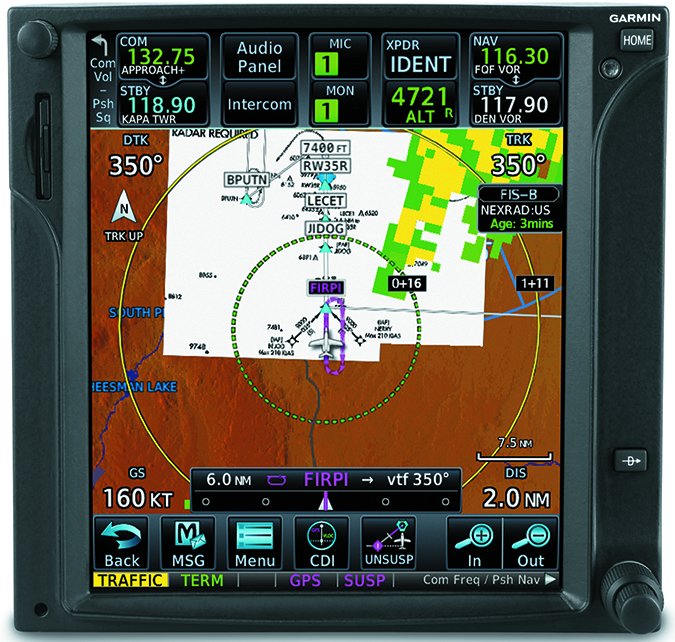
Through third-party software, even entry-level totalizers can do a lot for real-world fuel planning. That’s because integrating one with a modern GPS navigator can add serious and simplified trip planning, including the fool proof graphical display of endurance directly on the moving map. No more flipping to a fuel planning utility page on the navigator to know when you better start looking for gas.
Garmin’s onscreen Fuel Range Ring feature is present on the G1000 integrated avionics and it’s now standard on the company’s aftermarket GTN750 and GTN650 navigators. That’s a graphic below. The function requires GTN software version 6.00 or later. When enabled, the Fuel Range Ring shows an estimate of the remaining flight distance at the current fuel consumption rate and groundspeed. The data is derived by fuel quantity input or from a fuel flow computer. Garmin’s GTN installation manual specifically recognizes Shadin’s new AIS-380 RemoteFlo and the rest of the vintage Flo series models, with some exceptions. That doesn’t mean other sensors won’t work, but maintaining current operating software and programming it for the proper RS-232 data label is a must, Insight Avionics said when asked if its TrueFlow500 sensor will work with a new GTN750/650.

0)]
Avidyne’s IFD540/440 navigators also have low fuel protection (which was standard since the IFD’s inception), shown above. The map displays a green fuel range ring indicating a fuel reserve of 45 minutes. A dashed green circle indicates a maximum range without reserve. Avidyne’s current installation manual recognizes Shadin, JP Instruments, Electronics International, Insight and existing ARNAV FC10 computers as being compatible in the interface.
Both Avidyne and Garmin navigators have dedicated fuel planning pages and you don’t even need an onboard fuel computer to make use of them. Without one, you’ll just have to enter the fuel flow data on your own—that’s more work.
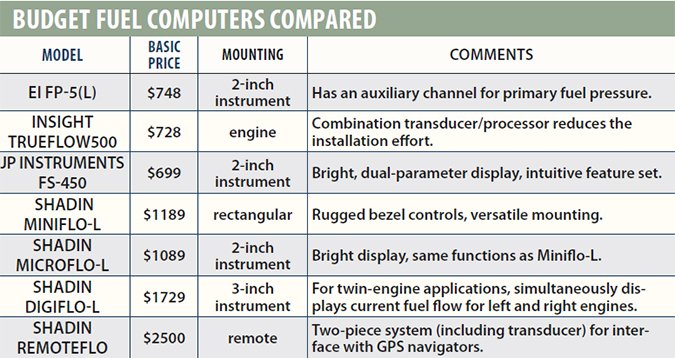
How You Might Choose
With big-screen fuel data integration, we wonder about the longevity of a dedicated fuel computer control head. The first step is to price an engine monitoring system. We’ll cover them in the next issue of Aviation Consumer, but consider that JPI’s entry-level EDM700 with integrated fuel computer might be installed for under $5000. While that number is higher than a basic standalone fuel computer installation, there is installation savings when installing fuel and engine data at the same time.
For the cleanest install and if you can live without a control head, we like Insight’s TrueFlow500 transducer/computer combo. For generous mounting options, the Shadin Flo series wins. In the end we don’t think there is a wrong choice for selecting any model we cover here. Choose one based on display preference and the available panel space.

